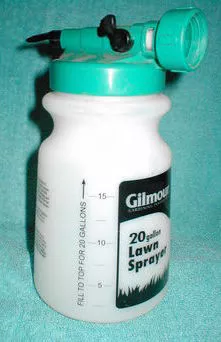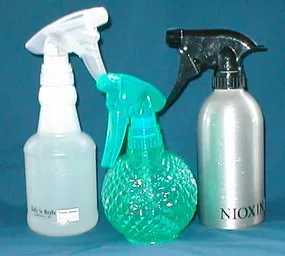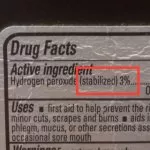How To Take a Hydrogen Peroxide Bath
How to make a hydrogen peroxide bath? It is very simple: add ½ cup to 1 cup of 35% food grade peroxide to a bath-tub-full of water. Then get in and soak, preferably for 30 minutes or longer for a pleasant soak. That’s it!
That seems to cover it……
Oh, but you want to know more????
How much again? Can I use 3% peroxide instead?
The usual recommendation is ½ to 1 cup of 35% hydrogen peroxide for a hydrogen peroxide bath. That’s equal to 6 to 12 cups of 3% hydrogen peroxide. Usually a brown bottle from the drugstore is 2 cups worth, so that would be 3 to 6 bottles of 3% in a bathtub.
I’ve seen a recommended amount starting lower – at ¼ cup of 35% peroxide. But usually it is ½ to 1 cup of 35% that is recommended.
Yes, one could use more, but I really recommend NOT using more than 1 cup (35%) unless you’ve taken lots and lots of baths with a cup and you know you are not having any side-effects that are uncomfortable. Even then, I would increase the amount very cautiously, and work up very very slowly.
What’s that about side effects?
Oh, sorry to jump ahead there. Well, taking a hydrogen peroxide bath is like giving yourself an oxygen supplement. That is, there is speculation that we can absorb some of the oxygen through our skin. And, people have reported all sorts of positive and negative effects from peroxide baths. It’s said that a peroxide bath is very detoxifying.
Some people report problems like headaches and loose stools after bathing with peroxide. Many times people take these symptoms as “detox reactions” – the body doing some housecleaning with the extra oxygen you’ve provided. That’s why I said that I would not recommend using more than the recommended amount. At least not until you’re very comfortable with peroxide baths.
I’ve used up to 4 cups of 35% peroxide in a tub of water. And yes, I worked up to that very very gradually. I think it is pretty unusual to use that much.
I’ve also read the recommendation not to take a bath with peroxide at night, because some people report that the extra oxygen gives them lots of energy, so going to bed and sleeping may be difficult. Personally, I’ve not found that to be the case. (But it sounds like a nice problem to have!)
Hydrogen peroxide baths are not a treatment or prevention for disease. But, as I said, a peroxide bath is said to be a way of taking in oxygen – a supplement of oxygen.
Why “food grade” peroxide
Ah. Because food grade peroxide doesn’t have the stabilizers that most other kinds of peroxide have. Food grade is "cleaner". You could use any kind of peroxide – various kinds have different stabilizers. (If using a different kind, be sure to check the percentage (concentration) so that you are using an equivalent amount.)
What else goes in the bath?
You can also use salt or essential oils, or whatever sort of stuff you like to use in the bath, right along with the hydrogen peroxide. I’ve used Epsom salts, essential oils, and herbal infusions for my peroxide bath soaks.
Will the peroxide bleach your hair?
That depends on how much peroxide you use, and how long and how often you stay in the peroxide baths. But, yes, it could bleach your body hair as well as your head hair (if you put your hair in the water).
Here's more about how peroxide is used to (intentionally) bleach hair!
These days I keep my hair out of the water. When I took a lot of baths with 2 to 4 cups of 35% peroxide per bath, my hair got bleached (very gradually lightened a bit). At first I liked it, but I found that my hair got dry and brittle. So now I keep my hair out of the water.
What will a hydrogen peroxide bath do?
I don’t actually claim to know. Well, I do know that the peroxide will kill any anaerobic germs in the water and on your skin. I think the idea that we take in some oxygen by taking peroxide baths is likely true, although I don’t know if anyone’s tried to measure this.
I’ve read many personal reports of good results and of uncomfortable results. Of course, your mileage may vary.
If you use the recommended levels of peroxide, I don’t think it is dangerous to take a hydrogen peroxide bath. I suppose I see it somewhat like taking salt baths, or having a bath soak with herbs: it may be beneficial, and there’s not much to lose. There’s always an exception someplace – someone who took an herb that harmed them. But, I think you know what I mean here – with the recommended levels of peroxide, the risks seem small.
No doubt I look at it this way because I’ve taken dozens of hydrogen peroxide baths, so the whole thing seems rather “tame” to me.
Is it okay to let the peroxide-water go down the drain?
Yeah, I think it is just fine. It will go to the sewage treatment center and kill a lot of anaerobic bacteria there, and, in the process, it will break down into water and oxygen.
If you happen to live in the country and your tub water goes out to the land or to a creek, it is probably okay, but I’d have some concern about concentration of peroxide in the water. It may be too strong to release directly into a stream, for example.
If your bath water is going to your own septic system, it is likely to be good for it.
How about running the bath water out to the garden?
Oh, I see you’ve already read the gardening pages! Yes, that’s a good way to reuse the bath water.
If you want to feed the used peroxide-bath-water to your plants, you’ll need to limit yourself to biodegradable soap. No salt, of course. You’ll need to plan ahead so that you don’t put anything in the bath water that you don’t want on the plants.
As you can see, here, if you’ve got a tub that holds about 25 to 35 gallons of water (which is pretty typical), then you can use up to about 1 to 1.5 cups of 35% peroxide in the bath and then feed the water to your plants. If you use less peroxide than this, that’s totally fine for your plants. Less is always okay.
If you use more peroxide than that, you have a stronger water-peroxide mixture than what’s recommended for watering plants. What’s too strong is open to discussion (or experiment). What you can do is add additional water to the tub (after you are done bathing) to further dilute the peroxide.
If your tub is a lot bigger or a lot smaller, you’ll need to work out the calculations for the amount of water your tub holds.
Anything else to know?
It seems to me that taking a hydrogen peroxide bath is mildly drying to my skin. Nothing major, but perhaps a bit drying. You could use some lotion or oil afterwards if you want.
Return from How to take a hydrogen peroxide bath to the home page for using hydrogen peroxide...
Subscribe to Hydrogen Peroxide Explorers' Newsletter
Our newsletter will keep you up to date on new pages added, plus some Adventures you can try at home:
No worries! Your email will be used ONLY to send you newsletters.
(Gallon):
(5 pounds):
For some links, I receive ad commissions, at no cost to you. More info here.
Site Search:
Use up and down arrows to select available result. Press enter to go to selected search result. Touch devices users can use touch and swipe gestures.
Subscribe to our newsletter (free):
Note: Products shown are sold by Amazon. This site does NOT sell hydrogen peroxide.
Do you like this site?

Gardening: attach sprayer to garden hose; use to dilute peroxide and spray on the garden

Spray bottles for peroxide




